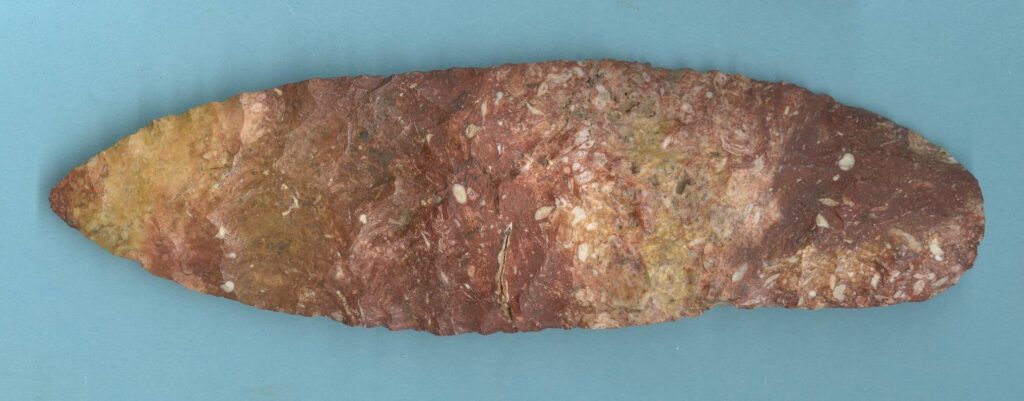
Scott Jones, in his book A View to the Past, has done an admirable job of explaining the scientific reasoning behind the process of thermal alteration, however, even Scott admits that the Indians did not need and probably did not have a deep understanding of this process in order to use it effectively in their tool development. All they knew was that it worked.
In brief, the process of repeatedly heating, cooling, and reheating some types of rock, coastal plains chert in this instance, to temperatures of 250 degrees or so with a maximum temperature of 300 degrees Fahrenheit, would cause the minutely crystalline structure of the rock to be “reorganized” into a yet finer structure, thus making the stone more workable, harder, and cause it to hold a finer edge. Jones also discovered in his studies that the further away from the quarry site the stone traveled, the more likely it was to be altered and used as a more lasting tool. It seems that even the higher quality chert was routinely altered to further improve its quality.
Jones seems to have focused his experimental practice on the methods seen in Late Archaic camp sites while he readily admitted that other methods he discussed may have been used, but lacked archaeological evidence. The process of thermal alteration as seen from the projectile points and blades produced began as early as the Transitional Paleo to Early Archaic period. I have seen only two thermally altered Paleo points and those may have been altered later in time by various surface fires with natural causes. The entire practice may in fact have been learned by early man by recovering rock resources that had been associated with earlier fires with natural causes.
The following steps have been adapted from A View to the Past by Scott Jones (page 157-158) using a camp fire as a means of achieving thermal alteration on a small scale for personal use. Large scale alteration using a kiln or oven is also possible, but should be done under the supervision of a skilled craftsman. Even in the campfire setting, care must be taken not to expose the rock to open flame or to excessive heat as chert contains small amounts of moisture and can explode when overheated.